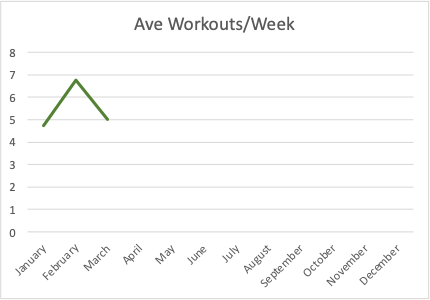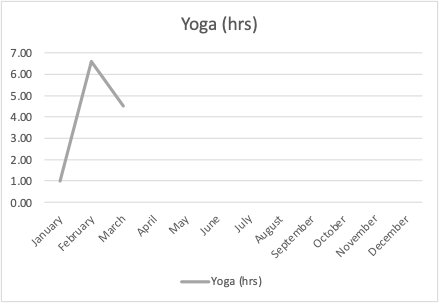OKRs and KPIs: What reframing my New Year’s resolutions can teach you about business
By: Daniel Prichard
Ever set ambitious, life changing New Year’s resolutions in January only to have your goals mysteriously disappear by February? You’re not alone. Studies show that 23% of Americans abandon their resolutions within the first week, 43% fail by the end of January, and only 9% actually complete their resolutions. Pretty dire numbers.
Confession: I am a habitual resolution abandoner. Like millions of other Americans, I repeatedly throw together vague New Year’s resolutions in January that rarely, if ever make, it past February. However, this year I was determined to take a different approach.
Throughout my career I have always championed the power of OKRs (objectives and key results) and KPIs (key performance indicators) with my employers and clients. Yet, I realized I was failing to incorporate these incredibly useful frameworks into my personal life. This past January, I set out to add structure to my New Year’s resolutions and utilize OKRs and KPIs.
As a refresher, OKRs are a framework for setting objectives with clear and measurable results in order to achieve the stated goals. OKRs allow organizations to set ambitious but achievable goals with clearly defined and trackable outcomes. This goal setting structure allows for greater transparency, alignment, and structure for achieving a company’s mission.
Similarly, KPIs utilize quantifiable metrics to evaluate the performance of an organization, team, product, initiative, etc. in achieving a business objective. They help companies track progress towards strategic goals and objectives.
While I utilized these frameworks for a handful of New Year’s resolutions, I specifically want to highlight their impact on my fitness goals. Below I have provided my OKRs and the related KPIs:
Objective: Increase the frequency and consistency of my workouts. Implement a tracking dashboard and utilize data for increased accountability.
Key Results:
Average at least five, one-hour workouts/week
Average 30+ miles ran/month
Surf as much as possible (more vague than it should be but surfing is my favorite physical activity 🤷♂️)
Build tracking dashboard within first week of 2024
Input workout data into tracking dashboard daily
KPIs:
Average number of workouts/week
Miles ran/month
Miles walked/month (not including walking that takes place in typical day-to-day)
Hours of yoga/month
Hours surfed/month
With these OKRs and KPIs in mind, we can see my performance below:
Three months into utilizing an OKR and KPI framework for my New Year’s resolutions, I have the following takeaways:
What gets measured gets managed
This famous quote from the “father of modern management”, Peter Drucker, holds true in business and our personal lives. There is zero chance I would know if I was progressing towards my goals if I was not actively measuring my results on a daily basis. Measurement is the key to accountability, consistency, and eventually results. It allows you to see progress, adjust strategies as needed, and achieve your objectives. Weeks that I saw my performance dipping resulted in strong pushes to add additional workouts. What gets measured gets managed, even yoga classes.
The first mile is the hardest
The first vinyasa is the stiffest. The first 15 minutes in the ocean are the coldest. Inertia is real. Simply getting started can be the most difficult part of starting a new initiative. This will subside. A big fat zero on your KPI tracker can help you get over the paralysis by analysis. Make the first sales call, write the first blog post, build the first product feature. Sometimes all you need to do is get the ball rolling. Which leads me to…
Momentum is real
It may be hard to see or feel the progress day-to-day but KPI dashboards and tracking allow you to see the big picture momentum. I’ve consistently hit personal records in my runs (8+ mile single runs; sub-30-mins 4-mile runs!) because these frameworks hold me accountable and lead to consistency. You’ll quickly learn how competitive you can be with yourself and how motivated you are to improve on your previous months if you have the data to track your progress. Those first couple miles that were challenging in January now seem like a breeze.
Utilize your tools
For me, this meant Map My Run for runs/walks, Ripcurl’s GPS watch for surfing, and Excel for KPI tracking and dashboards. Data is your friend; embrace it. Utilize the tools and technologies at your disposal and you will be able to create more robust insights. For businesses, this may be your CRM, business intelligence software, or project management tools. Lean into your tools, analyze your data, generate insights, adjust your strategies.
Progress isn’t always linear
I specifically included graphs of my KPIs to showcase this point. There will be fluctuations in your results. That is ok. The purpose of OKRs is big picture goals and strategies. In March I surfed the least amount of times, yet still hit my overall workout goals. Consider your end goals and don’t be discouraged by small setbacks.
We are a quarter of the way through 2024 and I am still maintaining my New Year’s resolutions. This has led to personal growth, new achievements, and even the addition of a few new goals (now aiming to run 400 miles this year!). I am holding myself accountable, tracking my progress, and achieving my goals.
I share all this not to highlight my own success, but to share what can be accomplished with a little structure and some useful frameworks. OKRs and KPIs may be the missing sauce that leads to your next personal or professional achievement. Set the goals, define the results, and measure your progress. All it takes is the first mile.







